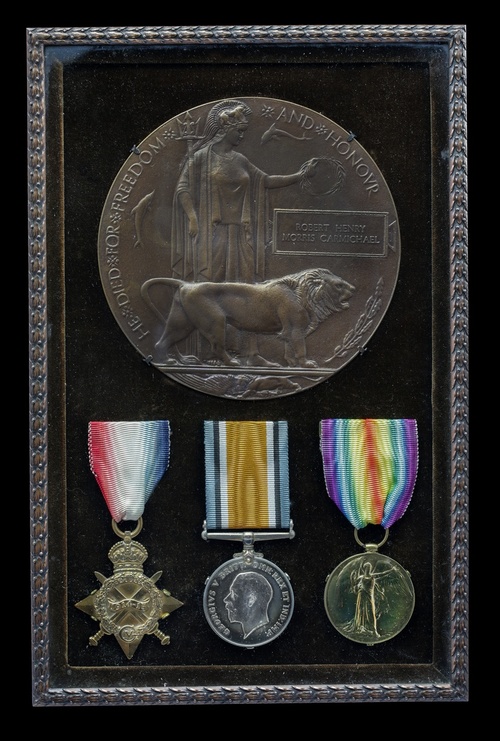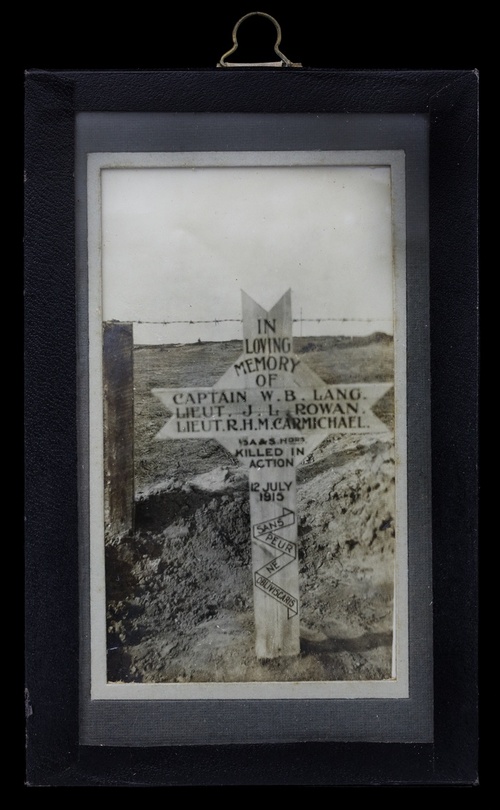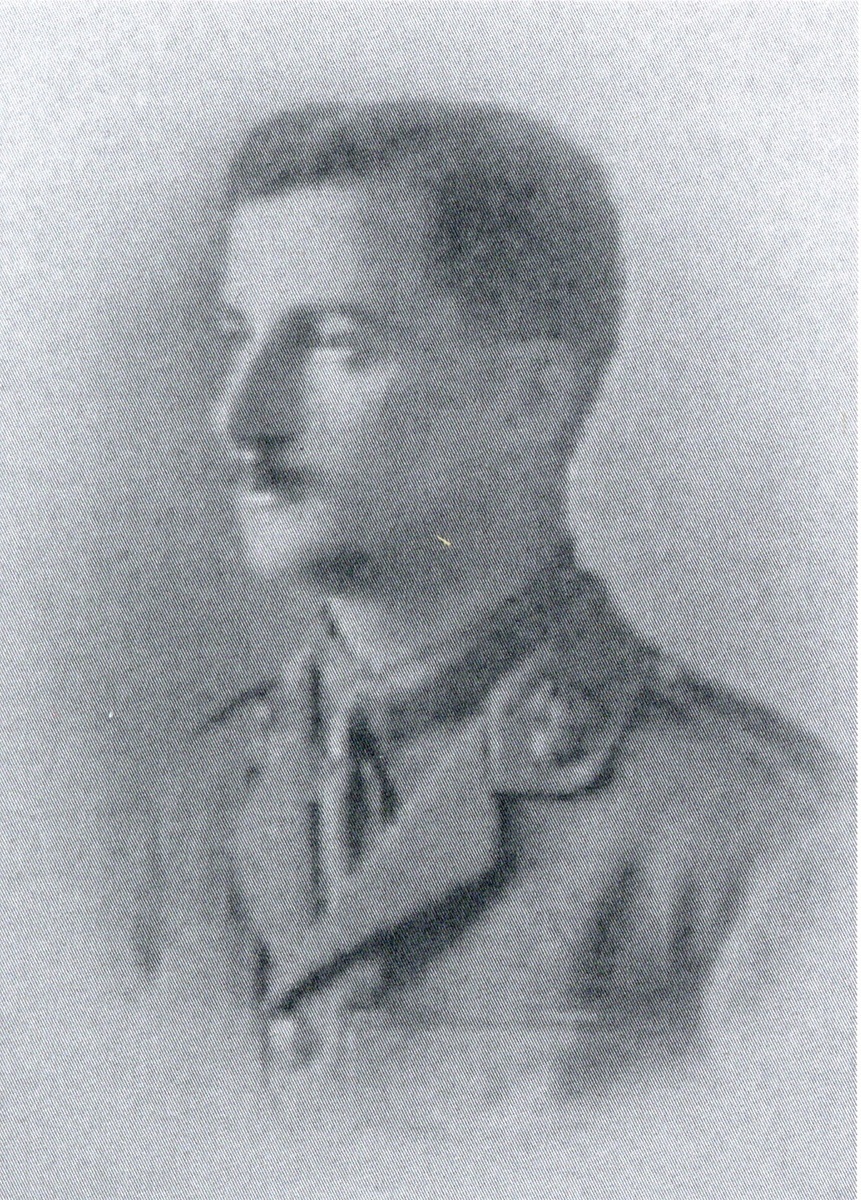Auction: 19003 - Orders, Decorations and Medals
Lot: 310D
Sold by Order of a Direct Descendant
The Great War group of four awarded to Lieutenant R. H. M. Carmichael, Argyll and Sutherland Highlanders, who was killed at Gallipoli during the 12 July 1915 attack on Achi Baba, struck down attempting to reach the first line of Turkish held trenches amidst a '400 yard wide seething hell of destruction'
1914-15 Star (Lieut. R. H. M. Carmichael A. & S. Highrs.); British War and Victory Medals (Lieut. R. H. M. Carmichael), together with his Great War Bronze Memorial Plaque (Robert Henry Morris Carmichael), in fine contemporary glass-fronted presentation case by Andrew Duthie, 426 Sauchiehall Street, Glasgow, extremely fine (4)
Robert Henry Morris Carmichael was born on 27 June 1895 at Greenock, Scotland, the fourth and youngest son of Thomas Carmichael and Nina Jane Isabella Carmichael. Educated at the Collegiate School, Greenock, and Loretto School, Musselburgh, at which latter he joined the Cadet Corps and became an expert Signaller, he later served an apprenticeship at Hardie & Rowan, Chartered Accountants of Greenock.
Using the Headmaster of Loretto School as a referee, Carmichael was commissioned 2nd Lieutenant in the 1/5th (Renfrewshire) Battalion, Princess Louise's Argyll and Sutherland Highlander Territorial Force on 11 March 1913. Promoted temporary Lieutenant on 1 November 1914, he embarked at for Alexandria on 1 June 1915 as part of 157th Brigade, 52nd Lowland Division. Arriving at Mudros on 1 July, the Battalion landed at Cape Helles, Gallipoli, on 3 July 1915 and immediately entered the British lines. Two days later they lined the trenches of Ghurka Bluff followed by a tour of duty in Nelson and Plymouth Avenues, before a brief respite in the rest lines near Pink Farm.
At this stage the Gallipoli peninsula had descended to a similar stalemate as witnessed on the Western Front. The terrain lent itself to defence and the Turkish artillery positions and machine gun emplacements were skilfully placed and cleverly camouflaged:
'The Turkish trench-works were on higher levels, and their artillery, machine guns, and snipers ranged the Cape Helles and Krithia defences with a hail of death. The Allies fought doggedly on, enduring the stifling heat, thirst, and plague of flies, but were long worn down by sickness and fatigue, they succumbed in hundreds to dysentery, enteric and jaundice - this in addition to heavy battle casualties' (The History of the 5th Battalion, Argyll & Sutherland Highlanders, refers).
Achi Baba, 12-13 July 1915 - Journey's end
Faced by a steady attrition of manpower, it was decided by Allied Command that one final attempt would be made by the 52nd Lowland Division to break through at Helles and attack towards Krithia along Achi Baba Nullah. At 0735hrs four 'waves' of men charged simultaneously, the Argyll's led by 'the skirl of pipes and with bayonets glinting in the sun'. The initial objectives were three enemy trenches, but it was discovered by the attackers that only two trenches existed. As a result, the Scottish Territorials had again to brave a murderous enemy barrage as they retired to the second objective. A Hawick veteran, Private Nichol Robertson of the 1/4th Battalion, King's Own Scottish Borderers, found himself well forward during the charge and described what happened:
'And of course the Turks could concentrate everything they had on one small sector, course so could we, but you see the Turks were on the defensive and we just got everything they could possibly lay into us. And then as far as we were concerned we were to take three lines of trenches, well, when we got over the first, there was another practically obliterated, and there was no such thing as the third line. When we got right out in the open we were outflanked on either side and when we turned to come back, we came into our own artillery fire as well as the Turk's. Some of us had pieces of biscuit tin on our back and of course, when we turned that flashed in the direction of the Turks and we just got it.'
The Argylls met a similar fate. For thirty hours, 2 officers and 40 other ranks consolidated in a circular stretch of trench known as the Horseshoe and held back repeated enemy counter-attacks:
'Several Argyll's picked up Turkish bombs and threw them back among the enemy with considerable effect, and there were many hectic bayonet onslaughts against the enemy infantry and machine-gunners in the series of bitter struggles which developed for the possession of isolated posts.'
Casualties were severe, the Commanding Officer of the 5th Battalion, Argyll and Sutherland Highlanders, Lieutenant-Colonel Duncan Darroch being among the wounded. Carmichael was killed by shrapnel at the head of his company in the attack on the first line of Turkish trenches and his body was never recovered. Aged 20 and unmarried, he is commemorated at Helles Memorial; sold with copied service record, private research and a small photograph of the original grave and memorial cross dedicated to Lieut. R. H. M. Carmichael, displaying the names of three officers of the Battalion, all killed on 12 July 1915.
Subject to 20% VAT on Buyer’s Premium. For more information please view Terms and Conditions for Buyers.
Sold for
£2,200
Starting price
£210









